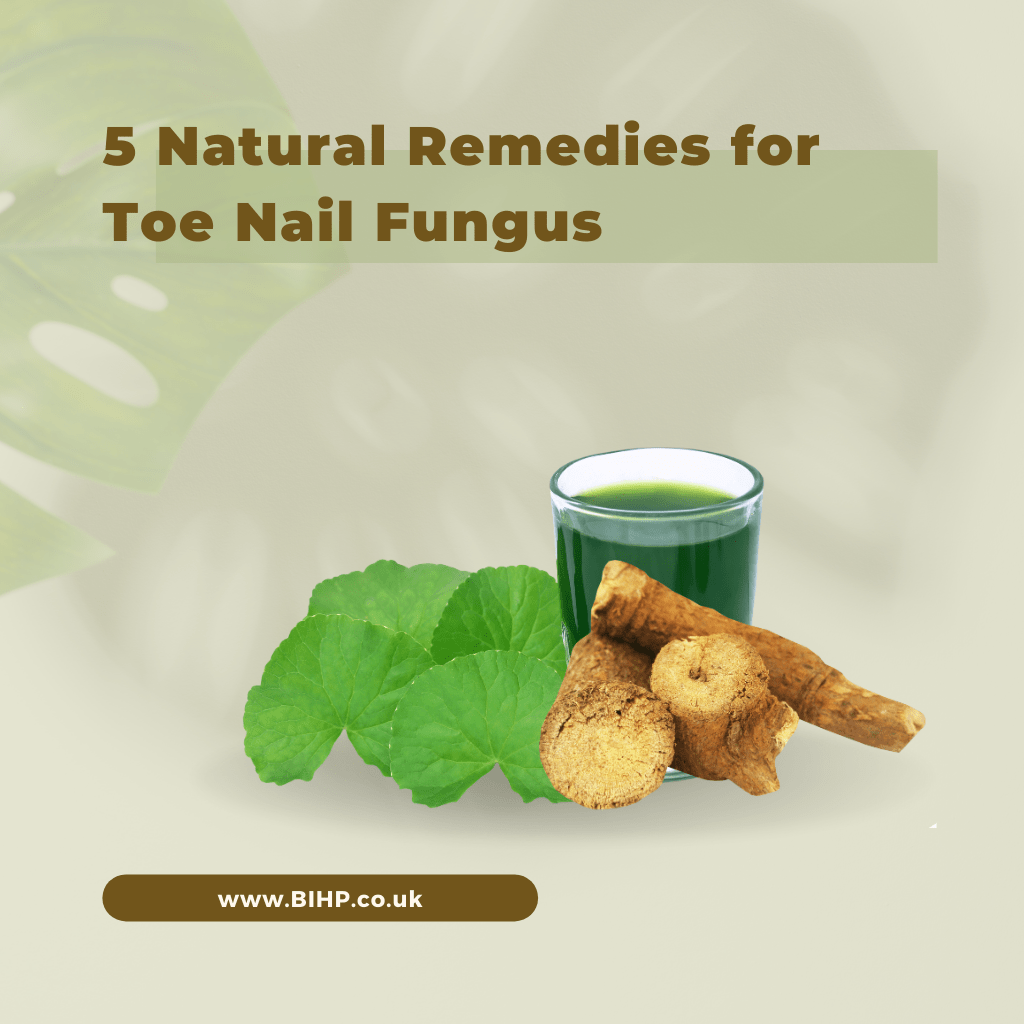Nail fungus home remedies, here are several that you can try. In this post, we’ll walk through a few natural options that many people turn to. That said, some fungal infections are simply too severe to treat at home and should be looked at by a professional. So, before diving into the remedies, let’s take a moment to understand what we’re dealing with.
Toe nail fungus, or onychomycosis, is a stubborn and often irritating condition that affects people all over the world. At first, it might seem harmless—just a faint change in colour at the edge of the nail. Over time, though, it can turn into something much more troubling. It may cause pain, crumbling nails, or even embarrassment that affects your daily life.
While there are pharmaceutical treatments available, they aren’t always ideal. For one thing, they can be expensive. Moreover, some of them come with side effects or require long-term use to see results. Because of this, more people are now turning towards natural solutions.
However, although natural remedies can offer support, they’re not a perfect fix for everyone. That’s why in this guide, we’ll explore the most popular home treatments for nail fungus. We’ll look at how they work, how to use them safely, and what to be aware of if you’re thinking of skipping the chemist and going all-natural.

Understanding Toe Nail Fungus
What Causes Toe Nail Fungus?
Toe nail fungus is typically caused by dermatophytes, a group of fungi that thrive in warm, moist environments such as trainers, socks, and locker rooms. These organisms break down keratin—a primary protein in your nails—leading to yellowing, thickening, and brittle nails. Yeasts and non-dermatophyte moulds may also be culprits, but dermatophytes remain the most common cause.
Why Is It So Persistent?
Fungal infections can be notoriously difficult to eradicate because fungi reproduce through spores, which are hardy and capable of surviving in adverse conditions. Furthermore, toe nails grow more slowly than fingernails and have less blood flow, meaning it can take a long time for medicines or natural remedies to reach and clear the infection completely.
Risk Factors
Poor Foot Hygiene: Wearing tight-fitting shoes and not drying feet thoroughly can encourage fungal growth.
Weakened Immune System: Conditions like diabetes, or medications that suppress immunity, can increase susceptibility.
Public Places: Exposure to locker rooms, swimming pools, and communal showers.
Nail Salons: Re-using tools, especially if they are improperly sterilised, can spread the fungus.
Why Consider Nail Fungus Home Remedies?
Growing Interest in Holistic Approaches
Many people are seeking holistic, chemical-free treatments for common health complaints, including toe nail fungus. The idea that one might battle these pesky microorganisms through essential oils and everyday household items has an undeniable allure. Natural remedies often offer a gentler, more budget-friendly alternative nail fungus home remedies to over-the-counter products, or prescription medications.
Cost-Effectiveness Of Nail Fungus Home Remedies
While pharmaceutical treatments can be quite expensive over time, many nail fungus home remedies utilise ingredients readily available in your kitchen cupboards or local shops. Tea tree oil, apple cider vinegar, or oregano oil, for instance, are inexpensive and versatile, further contributing to their appeal.
Fewer Harsh Chemicals
For those with particularly sensitive skin or concerns about synthetic chemicals, natural remedies can be soothing and comforting alternatives. Many individuals find that products like coconut oil or garlic paste can be used without experiencing irritating side effects common to certain topical antifungal prescriptions.

Popular Natural Nail Fungus Home Remedies for Toe Nail Fungus
1. Tea Tree Oil
Tea tree oil has been hailed for its antiseptic, antifungal, and antibacterial properties. Derived from the leaves of the Melaleuca alternifolia plant in Australia, tea tree oil can be applied directly to the nail (diluted with a carrier oil, if necessary) to help inhibit fungal growth.
2. Apple Cider Vinegar
Popular in many home remedies, apple cider vinegar is known for its acidic properties, which can help create an unfavourable environment for the fungus. Many proponents claim its ability to balance pH levels helps slow fungal spread.
3. Oregano Oil
Oregano oil is known for containing thymol, a compound with potent antifungal and anti-inflammatory properties. If properly diluted, oregano oil can be used as a topical application to target the fungus directly.
4. Coconut Oil
Coconut oil is rich in lauric acid and caprylic acid, both of which are believed to have antifungal properties. Moreover, coconut oil is gentle on the skin and can serve as a soothing moisturiser.
5. Garlic
Garlic possesses allicin, a compound widely recognised for its antimicrobial and antifungal properties. Although the odour may be off-putting, many natural health enthusiasts swear by its effectiveness.
The Downsides of Relying on Natural Remedies
While natural remedies can be a gentler and more holistic way to combat toe nail fungus, they are not without pitfalls. It is important to approach these treatments with both optimism and caution.
1. Inconsistent Research and Efficacy
One of the main drawbacks to using natural remedies is the scarcity of robust scientific research. While there is some evidence supporting certain ingredients—like tea tree oil—many remain under-researched. Much of what we know is based on anecdotal evidence, which can vary widely from person to person. A remedy that transforms one individual’s nails may do very little for another.
2. Longer Treatment Times
Nail fungus home remedies often require patient and consistent application. Fungal infections can take months to clear, even with prescription antifungals. When choosing a natural approach, you might have to wait even longer to see tangible results. The slow regrowth rate of toenails compounds this issue, and it is not unusual for full resolution to take up to a year in stubborn cases.
3. Risk of Allergic Reactions
Although natural, substances like tea tree oil, oregano oil, and garlic can still cause allergic reactions, skin irritation, or contact dermatitis in some individuals. Using highly concentrated essential oils without proper dilution increases the likelihood of unpleasant side effects. Should you experience redness, swelling, or increased discomfort, discontinue the remedy and consult a health professional.
4. Potential for Ineffectiveness
Nail fungus home remedies can be incredibly resilient. By relying solely on natural remedies, there is always a risk that the fungus will not fully clear. If the infection persists, or even worsens, it can spread to other toenails or the skin, causing more extensive complications.
5. Lack of Professional Supervision
Whilst a do-it-yourself approach can seem cost-effective and empowering, it may mean missing out on valuable medical advice. A qualified podiatrist can diagnose and tailor a treatment plan that addresses the specific strain of fungus you have. Going it alone might delay more effective interventions, particularly if you are dealing with severe or recurrent infections.
Combining Natural Remedies with Conventional Treatments
In many cases, the best approach to defeating toe nail fungus can be a combination of natural remedies and conventional treatments. Prescription antifungals may provide a strong defence, whilst natural methods can supplement the process by promoting a healthy environment for nail growth. For instance, you might alternate a foot soak in apple cider vinegar with topical application of a prescribed antifungal cream. This dual strategy could offer the benefits of both worlds, helping to speed recovery whilst minimising the need for constant high-strength medication.
Preventative Measures to Avoid Reinfection
Regardless of whether you choose natural or conventional treatments, prevention plays a crucial role in long-term success. Here are a few simple steps to keep the fungus at bay:
- Practice Good Foot Hygiene
Wash your feet daily with soap and warm water, ensuring you dry thoroughly—particularly between the toes. - Choose Breathable Footwear
Opt for shoes made from materials that allow airflow, helping to keep your feet dry. - Rotate Your Shoes
Avoid wearing the same pair of shoes every day. Give them time to air out, especially if you tend to sweat. - Wear Cotton or Bamboo Socks
Synthetic socks can trap moisture, so choosing natural materials can help keep your feet drier. - Avoid Going Barefoot in Communal Areas
Flip-flops or shower shoes can protect you from picking up the fungus in public spaces like locker rooms.
When to Seek Professional Help
Even if you prefer natural treatments, there may come a point when it is necessary to seek professional guidance. If you have tried various remedies for several months without improvement, or if your nail has become extremely painful, cracked, or has started to separate from the nail bed, it’s wise to consult a podiatrist or GP. Early intervention can prevent further damage and increase the likelihood of a successful resolution.
Conclusion
Toe nail fungus is an unwelcome yet common health issue that can affect anyone, regardless of age or lifestyle. Natural remedies—ranging from tea tree oil to apple cider vinegar—offer gentle, cost-effective, and environmentally friendly solutions to combat the stubborn fungus. Many people are drawn to these approaches, finding them easy to use at home and free from the strong chemicals sometimes associated with medical antifungal treatments.
However, it is critical to acknowledge the limitations. Natural treatments can be time-consuming, and scientific evidence for some remedies remains anecdotal. Moreover, allergic reactions can still occur, and one should never underestimate the resilience of fungal spores. If you choose to rely on natural remedies, commit to a consistent regimen and closely monitor your nails for signs of improvement or worsening.
For those seeking a balanced course of action, combining natural approaches with conventional medicines under professional supervision could be the key to successfully eliminating toe nail fungus once and for all. Above all, maintain good foot hygiene and make thoughtful changes to your daily habits to discourage reinfection. With persistence and the right combination of methods, you can restore your nails to their former glory, free from the grip of pesky fungi.






